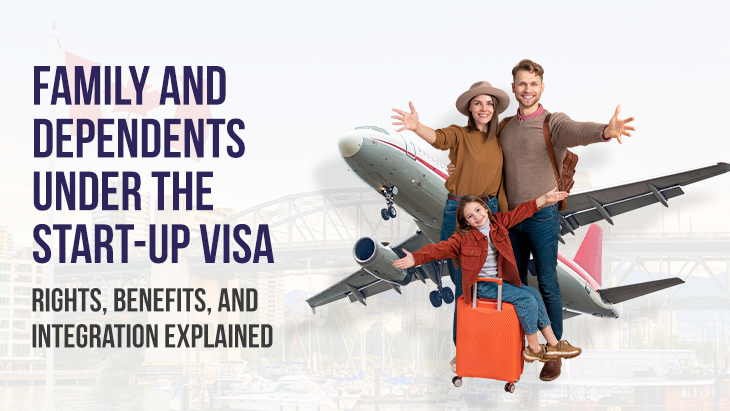Canada works the Temporary Foreign Worker Program (TFWP) to enhance its work power when there is no certified laborer in Canada to do a task. A business hoping to enlist a foreign laborer in Canada frequently needs to present a Labor Market Impact Assessment (LMIA) application to the Canadian government. The Canadian government representative surveying the application should find out that hiring a foreign laborer will have a positive or neutral impact on the Canadian job market. Among different elements, they should ensure that there are no missing certified Canadians for the foreign worker & that the unfamiliar laborer will have compensation & advantages that fulfill government and provincial guidelines.
The LMIA cycle is varied depending on whether the designated worker is named "high-pay" or "low-pay." Brief foreign laborers paid under the commonplace/regional middle pay are viewed as low-wage, while those at or over the center pay as high-wage.
By and large, all businesses should provide proof that they have endeavored to track down qualified Canadian residents or extremely durable occupants to fill work positions before going to unfamiliar specialists. Also, bosses can under go review for consistency with unofficial laws after their employee has started working in Canada.
What Is A Labour Market Impact Assessment?
A Labor Market Impact Assessment (LMIA) is an archive given by Employment and Social Development Canada (ESDC) evaluating the effect of recruiting a foreign laborer in Canada. A positive LMIA shows no Canadian resident or long-lasting occupant to fill a position, empowering a business to employ a foreign national. A negative LMIA shows that a designation ought to be filled by a Canadian resident or long-lasting occupant.
A foreign worker can't have any significant bearing on an LMIA. LMIAs instead are reports which should be applied for by a Canadian business. Whereas it is feasible to enlist a foreign laborer absolved from requiring an LMIA, or excluded from requiring a work grant, all surges of Canada's Temporary Foreign Worker Program (TFWP) expect a business to get an LMIA to apply outside Canada. Also, many of Canada immigration pathways to long-lasting residency want candidates to show a positive LMIA to guarantee focus for a Canadian proposition for employment.
Do I Need A LMIA?
Before you begin recruiting as a business, you want to decide if it is fundamental. The LMIA will essentially affirm that the transitory work is required and that no Canadians or long-lasting occupants are accessible to do the job.
There are a couple of ways of checking on the off chance that an LMIA is required. These ways include:
Revise the LMIA exception codes and work grant exclusions OR
Contact the International Mobility Workers Unit (IMWU (accessible provided that you're recruiting an impermanent unfamiliar specialist who is both right now outside Canada and from a country whose nationals are visa-excluded.
Rules For LMIA Canada
As of late, there have been slight changes to the LMIA in Canada immigration today. Under the new LMIA system, work positions come under two classifications- high-pay and low-wage. Occupations are viewed as high compensation if the compensation meets or surpasses the center pay in the area where one will perform the work, and low-wage if the salary is beneath the middle.
The application charge for LMIA demands is currently $1000 per laborer, an increment from the $275 per specialist expense for LMOs.
LMIA applications are submitted in the printed copy, via mail, to the fitting Service Canada Processing Center. Applications should incorporate proof of following the accompanying measures:
Handling Fee:
All applications for LMIAs incorporate a $1000 handling charge regardless of whether the outcome is negative. There can be exceptions for some candidates under the LMIAs for caregivers from this expense.
Business Legitimacy Documents: Documents demonstrating the business' status as an authentic Canadian business.
Change Plan:
Employers should present an arrangement for how they expect to address the need to enlist foreign nationals. At last, bosses are relied upon to recruit Canadian residents and super durable inhabitants rather than TFWs.
Enlistment Efforts:
Employers should submit proof that they put forth significant attempts to enroll Canadian residents and long-lasting occupants to fill the situation preceding recruiting a TFW.
Salary:
Applications should incorporate data in regards to the TFWs compensation. It will separate the high-wage positions from low-wage positions and guarantee that TFWs are paid a similar sum for work as their Canadian equivalents.
Work Environment Safety:
TFWs are qualified for similar guidelines of work environment security as Canadians similarly situated. Therefore, bosses should provide evidence that TFWs are covered by the protection which is at least comparable to the security inclusion presented by the region or region of the business.
Low-Wage Workers:
Businesses submitting LMIA applications for low-wage positions should likewise address the accompanying three prerequisites:
Cap on TFWs: If a business has recently employed TFWs they
Transportation: Recruiters should furnish low-wage laborers with enough transport to and from Canada. This transportation is at the business' cost.
Lodging: Low-wage laborers are given adequate accommodation for the term of their work in Canada.
Who Is Eligible For An LMIA?
After you have presented your LMIA application, the Employment and Social Development Canada (ESDC) will receive it. While surveying your application, they will look for a few things. These variables include:
- Are Canadians in the district accessible & ready to fill the occupation on offer?
- Has the business made adequate attempts to fill the situation with a Canadian laborer?
- Will recruiting foreign public assistance make or hold occupations in Canada?
- Is the business offering compensation or pay that is predictable with the provincial normal for the current situation?
- Are the functioning circumstances satisfactory by Canadian work principles?
- Is the business or the business where the occupation sits occupied with ongoing work disputes?
What Happens After LMIA is Approved?
After processing an LMIA application, managers make a choice. Assuming the business is a positive LMIA, they can continue employing a foreign national. If it is a negative LMIA, the venture isn't supported to recruit a foreign national.
Positive LMIAs are substantial for a pretty long time from the date of issue. By getting a positive LMIA, the business should advise the foreign worker with the goal that they can apply for their work permit. In specific circumstances, bosses might apply to have their LMIA application handled in 10 days. To qualify for assisted handling, a business should be situated outside of Quebec and meet one of the accompanying necessities:
- Most elevated compensation positions: top 10% of wages acquired by Canadians in the region/region of the job
- Gifted Trades: paid the median regional pay at the least for the position.
- Momentary positions: 120 days or less
- Express Entry: the LMIA is to help an Express Entry applicant














Post Comments